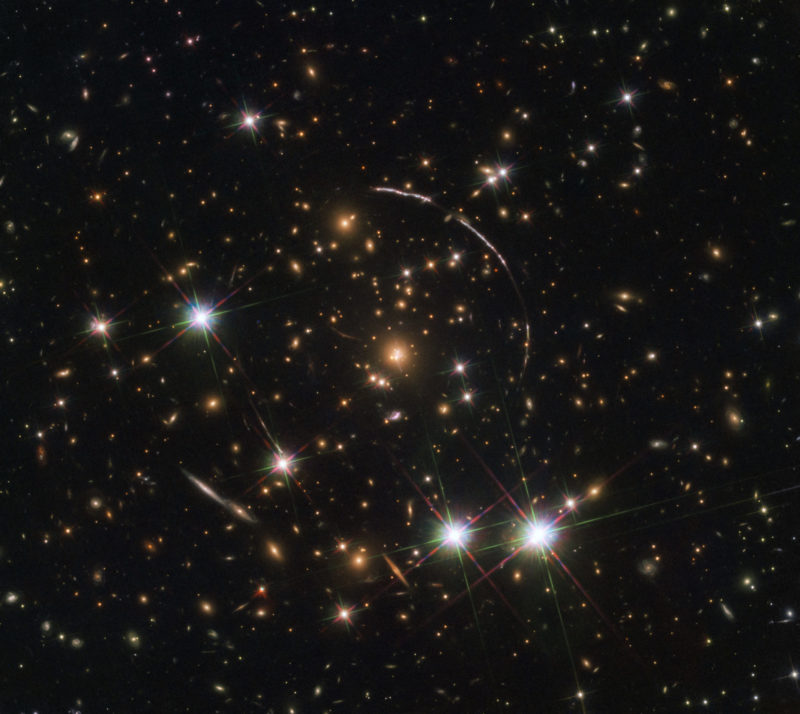The Sunburst Arc shows a fuzzy or blurry image to the untrained eye. In fact, the image shows 12 copies of a galaxy 11 billion light-years away, distorted and copies by gravity in the foreground.
Meet the Sunburst Arc
At least 12 copies of the galaxy – called PSZ1 G311.65-18.48 and nicknamed the Sunburst Arc – streak across the sky. Thanks to this phenomenon, astronomers can study it in incredible detail.

Gravity Doesn’t Stop
Gravity attracts mass regardless of distance. It’s the invisible force that binds the Universe together, its strength proportional to mass. The more mass an object has, the stronger its gravity. Gravity does not just attract mass. A powerful source of gravity can also bend the path of light through space.
On galactic scales, this means that something with a lot of gravity – such as a cluster of galaxies, for example – can bend and magnify the light of something behind it in the far distance.
This is called gravitational lensing, an effect predicted by Einstein. Astronomers regularly use it to study galaxies in the early Universe that would otherwise be too faint to see well.
The gravitational lensing effect can even duplicate images, making multiple copies of a faint, distant galaxy. The Sunburst Arc is a prime example.
Between us and the galaxy, at a distance of 4.6 billion light-years, is a massive cluster of galaxies that’s bending and splitting the Sunburst Arc’s light. At least 12 copies of the galaxy appear in Hubble’s photo, split over four major arcs – three in the top right and one in the bottom left of the photo.
Because of the intense lensing, the Sunburst Arc is one of the brightest known lensed galaxies. Some of the copies of the galaxy are 10 to 30 times brighter than the actual galaxy itself – which allows astronomers to make out features as small as 520 light-years across.
What to Read Next


